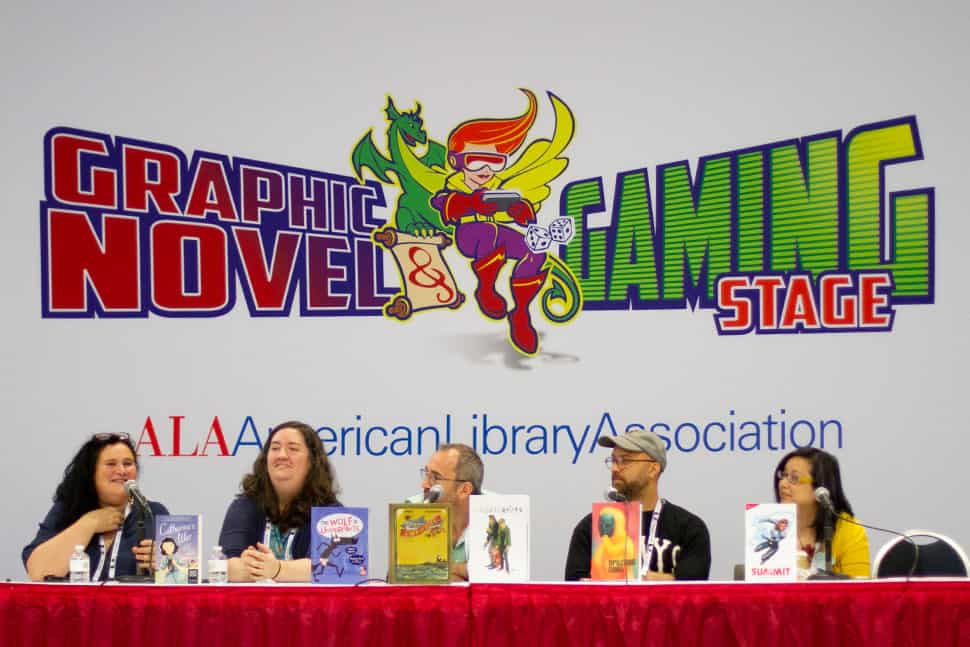
Comics and graphic novel writers shared secrets of their craft in Wordy to Wordless: How Comics Writers Adapt to Different Genres, Ages, and Artists, a panel held on the Graphic Novel and Gaming Stage in the Exhibit Hall at the American Library Association’s 2019 Annual Conference and Exhibition in Washington, D.C. The four writers—Julia Billet, Wilfrid Lupano, Amy Chu, and Ezra Claytan Daniels—revealed what inspires their stories and how they bring them to life with artists.
Moderator Heidi MacDonald, editor-in-chief of comic industry blog The Beat, began by asking the panelists to describe the inspirations behind their most well-known works. Speaking through a translator, French writer Julia Billet said that the story detailed in her graphic novel Catherine’s War, which follows a young Jewish girl during WWII as she journeys across France while behind hidden by families from Nazis, is actually her mother’s story—with embellishments in parts.
“My mother told me the story, but not the whole story,” Billet said. “It was too painful.” After conducting research and talking to others who survived the Holocaust, Billet reimagined her mother’s story.
“It’s important to stay true to history, but as a writer, you have to take artistic license to create an exciting story,” she said.
Lupano used his young son’s fear of wolves as inspiration for his YA book, The Wolf in Underpants. To help the boy confront his fears, Lupano’s wife—who eventually illustrated The Wolf in Underpants—painted a large cartoon wolf on his bedroom wall, but depicted the animal wearing a pair of underpants. Lupano and his wife hoped that the ridiculous attire would help show their son that he didn’t have to fear something so silly.
“It worked perfectly,” Lupano said. The writer turned his son’s experience into a book about a whole forest who fears a big bad wolf they’ve never seen. That all changes when they finally do—and he’s wearing a big pair of striped underpants.
Daniels said that his writing is cathartic, and that his latest work BTM FDR—a sci-fi/horror comedy set on the Southside of Chicago—was written as a way to understand his role in gentrification.
“It was artistic therapy,” he said.
When asked about the graphic novel’s monochromatic color palette, Daniels gave full credit to artist Ben Passmore. Daniels said that he had initially wanted it to be in black and white, but Passmore’s artistic choice made the book much more striking.
Writer Amy Chu said that she considers herself a hired gun, having written for well-known Marvel and DC titles such as Green Hornet, Poison Ivy, Wonder Woman, Ant-Man, and Deadpool. Chu said that she’s given a lot of leeway writing for established titles—more than with personal stories. Chu detailed the near-full artistic freedom she was given for the story and character in the new comic, SUMMIT. She used that freedom to create a queer astronaut who’s an MIT professor with the power of plasma fusion.
Being able to interject real-world scientific or historical elements is important, Chu said. “I’m big on trying to teach readers something,” she said.
Billet echoed Chu’s words when describing one of the reasons she wanted to write Catherine’s War.
“Even though my mother’s story happened in 1942, it’s still happening now,” she said. “People in Europe, France, and the US are involved in a new diaspora. This is a chance to tell readers now and in the future to do better.”


